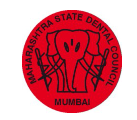- Sexual Health
- Dental Health and Hygiene
- General Medicine
- STDs/STIs
- Mental Health
- Healthcare



If you’re experiencing sharp pain in your anus and lower abdomen after intercourse, you’re not alone.
Opposite Gender Friendships While in a Relationship can be tricky. Learn how to set boundaries, handle jealousy, and build trust with your partner.
Sadism isn’t always extreme. Discover everyday sadism, what drives it, and how to spot harmful patterns. Learn more in our expert guide.
Looking for a sex stamina booster that actually works? Learn what’s hype, what’s safe, and what helps. Doctor-backed insights inside.
What is post orgasm torture? Explore the thrill behind POT, what to expect, and how to enjoy it safely with consent and open communication.
Get clear answers on ejaculation in mouth—covering STI risks, allergies, taste, and hygiene tips. Stay informed and make safe choices.
Not everything you’ve heard is true. This expert-backed guide clears up the side effects of masturbation and when to seek help. Read on for clarity.
Unconsummated marriage meaning, causes, and expert ways to fix it. Learn how couples can rebuild intimacy step by step
Narcissistic sexual abuse can be hard to recognize. Learn the signs, effects, and how to start healing in this supportive, expert-backed guide.
Can fear cause arousal? Learn how your body reacts to fear, why it can feel exciting, and when it’s totally normal or emotionally confusing

 Author
Author












